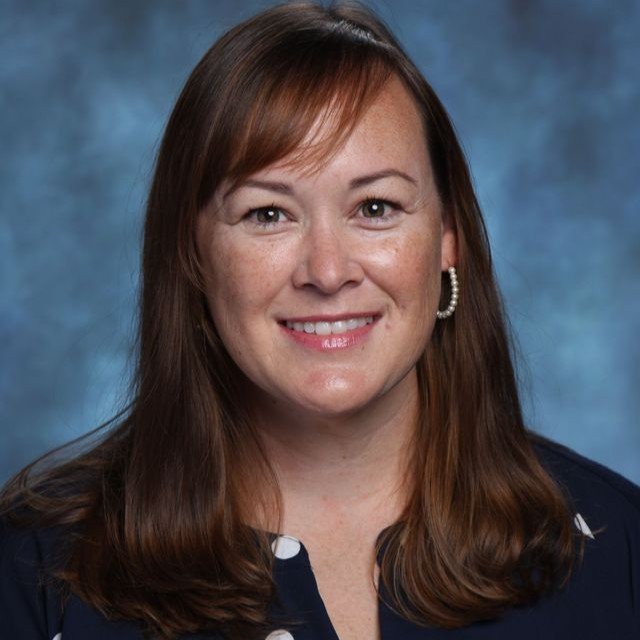| By Aimee Heavener, Marketing Manager, Gale |
As a mother of three teenagers, I see how tumultuous adolescence is daily. Likewise, as a former high school educator, I know the pressures students feel from their classes, extracurriculars, post-graduation plans, social lives, social media, and so much more.
A strong foundation of social and emotional learning (SEL) is essential to helping our children manage their mental health and wellness as they face each new life challenge. SEL gives students the tools they need to regulate their behavior, form and maintain relationships, overcome challenges, and make decisions so they can lead healthier and more fulfilled lives.1
Many states are prioritizing SEL in combination with character education, a concept that focuses on teaching students values like respect and civic virtue.2 According to the National Association of State Boards of Education (NASBE), all states aside from six in the U.S. have policies that either mandate or encourage SEL or character development in schools.3
How Can Educators Support SEL?
Studies show that implementing SEL early makes the most impact on developing learners. This can be as small as teaching children to share toys in preschool and encouraging students to voice their feelings.4
Keeping SEL in mind daily is the most effective way to ensure students have the essential skills they need. So, how can an educator take on the added responsibility of incorporating SEL into an already jam-packed, carefully orchestrated, state-mandated curriculum? While integrating SEL into daily instruction is no small request, I’m grateful to share tips that can help educators meet these needs for their students.
Here are four strategies I’ve learned while working alongside other education professionals and content area experts who are dedicated to improving the lives of both students and teachers. These tips help make everyday SEL an attainable goal for educators.
1. Utilize Age-Appropriate SEL Content
Age-appropriate SEL content is essential to help students build a strong mental health and wellness foundation early and support them in their social development through elementary, middle, and high school.
For younger students, SEL can be as simple as learning how to work in groups or develop empathy. Older students can benefit from SEL activities focused on problem-solving or addressing conflicting ideas in classroom debates. In mid- to upper-level grades, journaling is also an effective tactic to encourage students to reflect on their thoughts and voice challenges.5
Educators can find ready-made lessons to support SEL tailored to every level and backed by standards-aligned content. These lessons are often specifically designed to help teach soft skills like social awareness, responsible decision-making, effective communication, and conflict management. Prepared lessons make it much easier for educators to plan and execute SEL in their classrooms daily.
2. Encourage Students to Self-Reflect in Content
Aside from using lessons that are intended to support SEL outcomes, another strategy for implementing SEL in everyday instruction is showcasing content that resonates with students. When students see themselves or their challenges reflected in what they’re learning, they often feel less isolated and more connected to the world around them.6
This is especially relevant to English language arts classes because there are many opportunities to connect students to literature and discuss themes tied to SEL. Finding age-appropriate content that speaks to students is key here as well. For example, educators might use a storybook to teach younger students about managing negative emotions. For high school students, on the other hand, teachers might craft a lesson studying how teenagers in classic texts managed their emotions and relationships during historical events.
Educators can also give students the freedom to find texts that resonate with them by offering a wide variety of content from diverse authors. When students can choose the literature they read for class, they’re more likely to find stories that relate to their own experiences.
3. Understand Your School’s Wellness Resources
Students often feel connected to their teachers and are more likely to reach out to them about challenges instead of going to a counselor. It’s important for students to feel supported by the adults they trust in their school community, but teachers aren’t always equipped to handle student challenges.7 The best approach is to ensure educators understand their school’s wellness resources, so they can guide students to the help they need.
While building a solid mental health and wellness foundation is an ongoing process, emergencies, big or small, don’t happen on a schedule. When a student comes to a teacher for help, sometimes they’re simply looking for a sounding board, but other times they may need specific resources.
Educators should connect with school guidance counselors to better understand when to refer students to a school professional versus when to offer resources to help students overcome challenges on their own. Teachers can also be prepared by knowing what types of SEL content your school has available for students. On-demand digital libraries with reliable mental health and wellness information can serve as accessible, credible resources to share with students who are curious about social or emotional challenges.
4. Prioritize Your Own Health & Wellness
Last, but certainly not least, teachers need to be able to put on their own oxygen masks first. On top of the stress of instruction planning and adhering to curriculum standards, educators are exposed to a daily avalanche of emotions from their students. Empower your teachers to focus on their own mental health and wellness by prioritizing professional development.
This development doesn’t always have to focus on traditional career themes like classroom management and technology. Professional development resources are available to help teachers with self-care, mindfulness, time management techniques, and more.
Student success starts with educator success. When teachers feel supported, they can more successfully guide their students through social and emotional development. Give your educators the tools they need to prioritize not just their students’ social and emotional health but their own wellness.
Ready to Strengthen SEL Support in Your School?
When educators have the resources they need to help drive social and emotional development, they’re able to help create healthier futures for their students. Many digital solutions are available to help educators integrate SEL into daily instruction easily and effectively.
Find ready-made lesson plans and age-appropriate, standards-aligned content in Gale In Context: For Educators. Offer students a more inclusive, relevant selection of literary works with Gale In Context: Literature. Connect students to trusted, on-demand SEL content in Gale eBooks or Gale Presents: Imago. And discover educator-empowering professional development eBooks to provide more support for your teachers.
Have a question about how you can support SEL in your school, or want an inside look at Gale’s digital SEL resources? Reach out to your rep today.
Notes:
- “Social and Emotional Learning.” Gale In Context Online Collection, 2022.
- “Character Education…Our Shared Responsibility.” U.S. Department of Education, May 31, 2005.
- “School Health Policy Database.” National Association of State Boards of Education (NASBE), 2023.
- “Social and Emotional Learning.”
- Finley, Todd. “The Importance of Student Journals and How to Respond Efficiently.” Edutopia, September 1, 2010.
- Samuel, Rachel. “Why It’s Critical for Students to ‘See Themselves’ in Classroom Materials.” Read to Lead, February 19, 2020.
- Green, Jennifer Greif. “Teachers Have an Important Role to Play in Children’s Mental Health.” Boston University Wheelock College of Education & Human Development, May 26, 2022.

About the Author
Aimee has taught gymnastics to preschoolers, personal finance to adults, and marketing to high schoolers. She is now dedicated to supporting educators through her work at Gale. In her free time, she likes to hassle her three teenage children and spoil her three rescue dogs.

